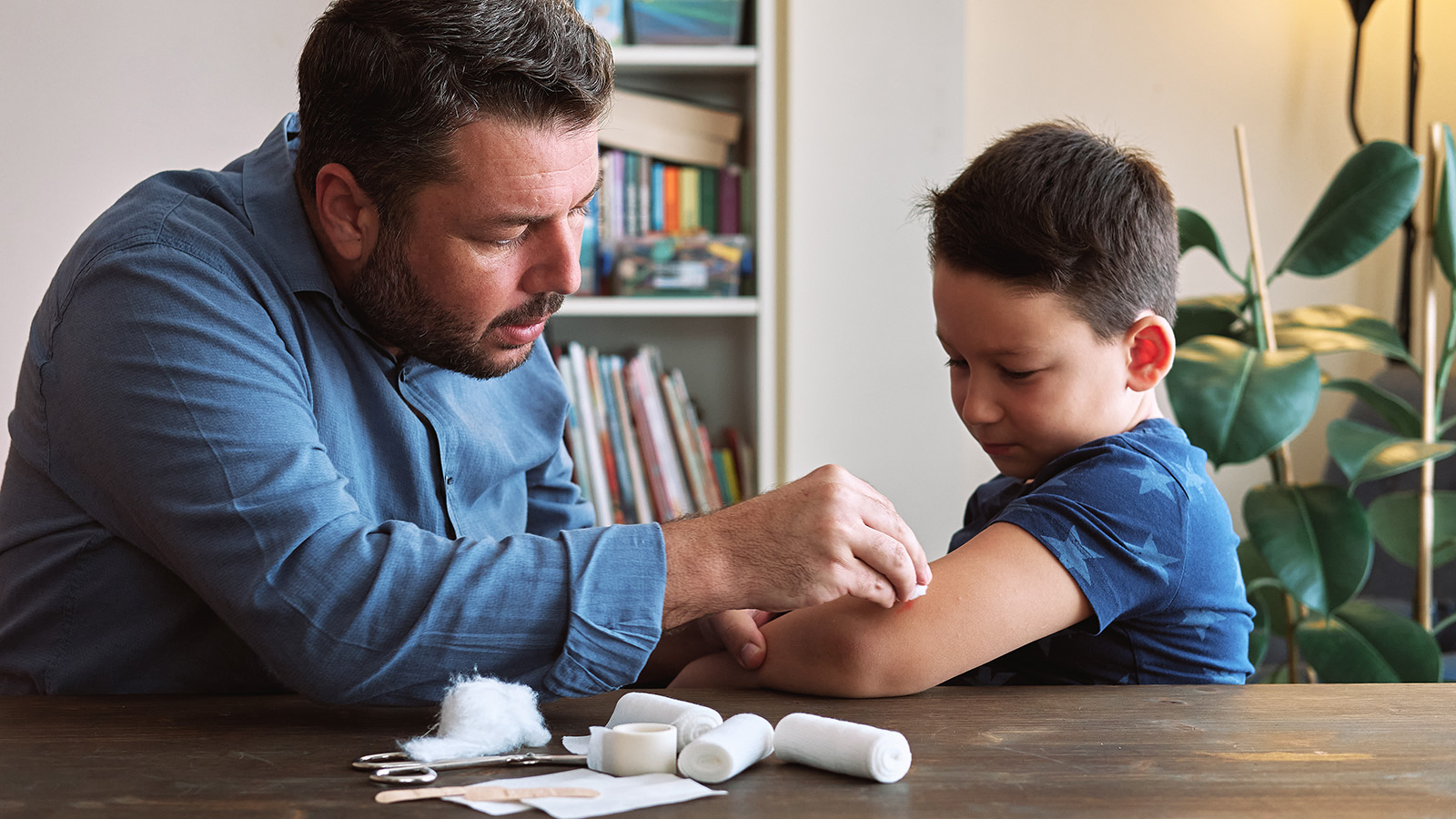Checking your child for bleeds

A child with hemophilia may not be able to tell you if they’re having a bleed. Some signs are difficult to recognize, even in adults. So, examining and watching your child for certain behaviors and the signs of serious bleeds can help ensure they get treatment quickly — before they cause lasting damage.
Here are some simple things you can check:
- Look at your child’s skin on a regular basis. Check for any new or unusual bruises. Read on for more information on bruises and serious bleeds.
- Play with your child. For example, see if both hands are used when reaching for items.
- Make sure both of your child’s arms and legs move the same way, and that your child doesn’t cry when you move one of his or her limbs.
- Your child’s legs and arms should look and feel about the same. Check for equal size, shape, and color.
Some signs are difficult to recognize, even in adults.
Muscle bleed signs
- Muscle that feels tight, warm, or looks swollen
- Skin over the muscle that changes color or turns blue
Joint bleed signs
- A joint — knee, elbow, ankle, shoulder, etc. — that looks swollen, red, warm, and/or stiff
- Crankiness or crying for no obvious reason. For example, they aren’t sick, hungry, thirsty, don’t need a diaper change or just want to be held
Urinary tract or gastrointestinal (GI) bleeds signs
- Urine that looks reddish or brown
- Stool that has blood in it or it looks black and tar-like
Take action if you see any signs of or suspect your child has a bleed
- Call your child’s doctor or hemophilia treatment center.
- Begin R.I.C.E. (rest, ice, compression, and elevation) right away even if you aren’t sure there is a bleed or you’ve given factor or other treatment to stop the bleed. R.I.C.E. for bleeds means:
- Rest: Try to keep your child from moving or putting pressure on the area or joint.
- Ice: Wrap a bag of frozen vegetables or a frozen, wet washcloth in a light cloth and place it on the affected area. Don’t put ice directly on your child’s skin.
- Compression: If possible, wrap the joint or area with a compression bandage or elastic stocking.
- Elevation: Try to raise and keep the bleeding area above the level of your child’s heart.
- Never give your child medication that contains aspirin (acetylsalicylic acid) or non-steroidal anti-inflammatory medications (NSAIDs) like ibuprofen or naproxen — these medicines can slow down blood clotting. Call your child’s doctor or pharmacist if you aren’t sure.
Bruises are very common in children with hemophilia
Most bruises aren’t serious, including large bruises with lumps in the middle. Always call your child’s doctor if you aren’t sure.
Bleeds in these areas are especially serious
Get emergency medical care right away if you suspect or know your child has a bleed in these areas: the head, back, eyes, groin area, throat, hip, neck and abdomen or torso.
We know taking care of a child with hemophilia can be challenging. Call your CVS Specialty Hemophilia CareTeam at 1-866-RxCare-1 (1-866-792-2731) anytime to learn more.
This information is not a substitute for medical advice or treatment. Talk to your doctor or health care provider about your medical condition and prior to starting any new treatment. CVS Specialty assumes no liability whatsoever for the information provided or for any diagnosis or treatment made as a result, nor is it responsible for the reliability of the content.
CVS Specialty does not operate all the websites/organizations listed here, nor is it responsible for the availability or reliability of their content. These listings do not imply or constitute an endorsement, sponsorship, or recommendation by CVS Specialty.
Your privacy is important to us. Our employees are trained regarding the appropriate way to handle your private health information.
